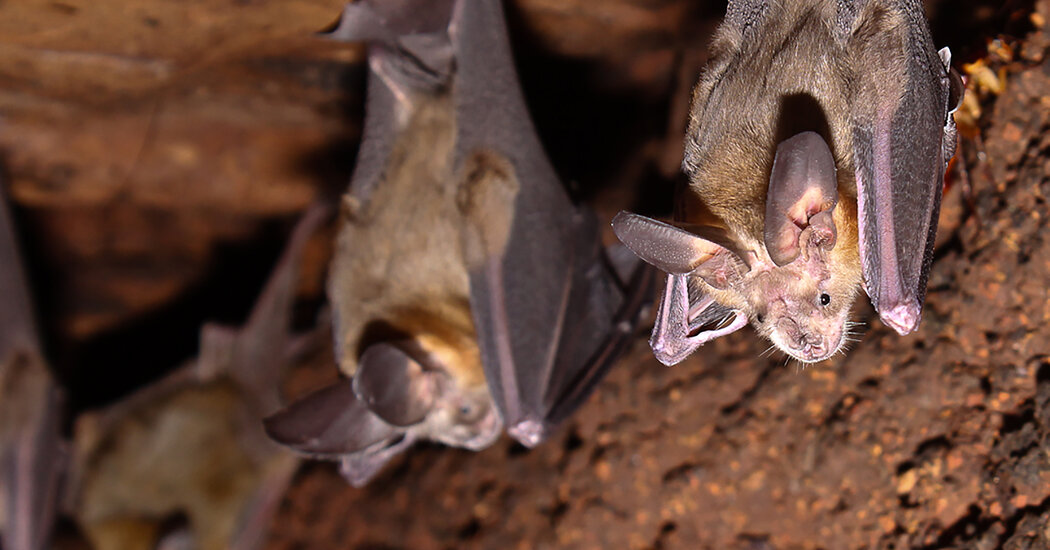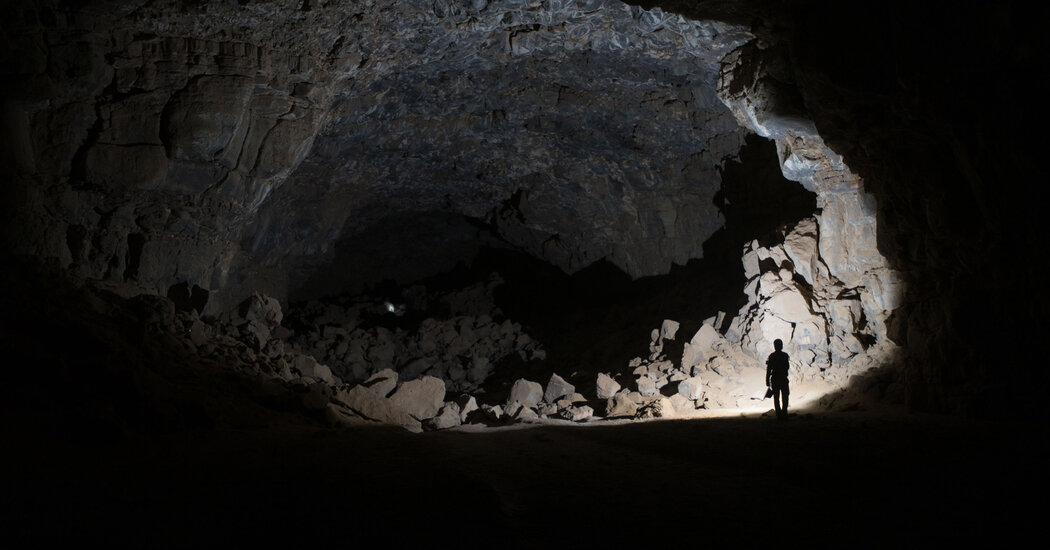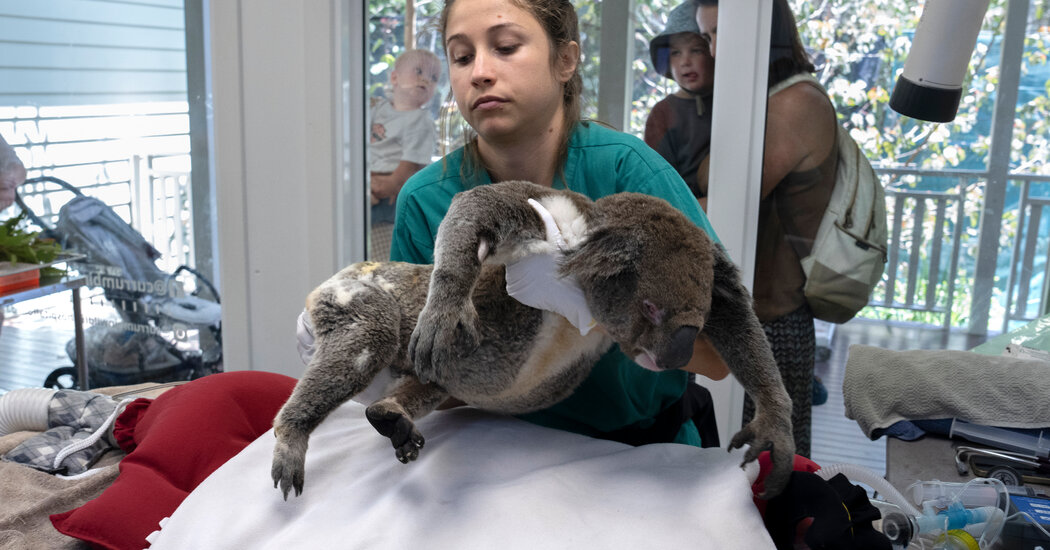

Imagine you are at a research camp in the Tanzanian grasslands and you need to relieve yourself. You walk to the nearby pit toilet: a concrete slab with a tiny portal that opens into an eight-foot pit heaped with human waste. You drop your pants, squat and carry out your business. Suddenly you realize you are not alone. Maybe it is a slight gust of air, or something even more corporeal.
“I’ve had the soft, leathery caress of a bat’s wing against my buttocks while having a poo,” said Leejiah Dorward, a postdoctoral researcher at Bangor University in Wales.
In Tanzania, the spaces under certain pit latrines have become cozy havens for roosting bats, according to a paper published by Dr. Dorward and colleagues in September in the African Journal of Ecology. The researchers found the pits’ rotting depths warm the air, and the concrete slab overhead keeps predators out. Even the occasional falling feces or overhead spray does not drive the bats away, though they may startle the animals into flight.
“Suddenly you would feel one charge upwards and launch itself between your legs,” said Amy Dickman, a senior research fellow at Oxford University and director of the Ruaha Carnivore Project in Tanzania. “Then you have this furry mammal just flying into your behind.” Though Dr. Dickman was not involved with the research, her toilet was one of seven examined by Dr. Dorward.
Dr. Dorward first encountered the bats in 2015 at Dr. Dickman’s research camp near Ruaha National Park (where he first felt the velvety kiss of furred wings on his derrière), but toilet bats may be familiar bathroom buddies to anyone who has used pit latrines in certain parts of Africa.
Sospeter Kibiwot, a bat ecologist at the University of Eldoret in Kenya, first saw a toilet bat when he was in elementary school, an encounter that both spooked him and inspired him to learn more about bats. “Since my childhood, I have spotted more than 10 pit-latrine roosts,” Mr. Kibiwot wrote in an email. “Not all such latrines are roosts but just a few.”
Members of the conservation organization Global South Bats have seen bats roosting in latrines in Zambia and Madagascar and in sewage systems in Mauritius, according to Angelica Menchaca, the group’s general director.
Realizing the phenomenon seemed absent from scientific literature, Dr. Dorward began to survey the pit toilets around camp for potential occupants in 2017. His first surveilling method was to photograph the bats. His camera would not fit down the drop hole — an intentionally tiny opening to ensure humans do not tumble through — so he had to disconnect the lens from the camera, pass both pieces through the hole and twist them together without dropping anything.
“It was not an optimal way of doing it,” Dr. Dorward said.
He later fashioned a less precarious strategy, inspired by a dental mirror. He taped a small mirror and a flashlight to angled aluminum bars, allowing him to count all the roosting bats, which clung to the wooden bars holding up the concrete slab.
Six of the seven toilets at camp were blessed with bats. The oldest toilet, which was established seven or eight years before the survey, housed 9 to 13 bats. The newest toilet had no bats. A toilet with just a foot or two between the hole and the mound of stools had only a few bats.
The researchers sent photos of the bats to Bruce Patterson, a mammal curator at the Field Museum in Chicago. Dr. Patterson helped identify the toilet dwellers as Nycteris, or slit-faced bats (the researchers also found a single heart-nosed bat in the surveys).
Paul Webala, a wildlife biologist at Maasai Mara University in Kenya, who has a forthcoming paper about toilet bats in that country, has observed the large-eared slit-faced bat and the Egyptian slit-faced bat in his own latrine surveys.
Dr. Patterson said he suspects that Nycteris bats may be most dominant in latrines because their wing shape allows them to maneuver in tight spaces and trespass through small holes. “There are lots of bats that would love to roost there but are incapable of doing it because of their flight mechanics,” he said.
While some bats thrive by making homes of outhouses, adjacency to humans leaves other species in the lurch. “Urbanization jeopardizes most bat species,” said Danilo Russo, an ecologist at the University of Naples Federico II. Some other researchers said the bats might even be using the latrines as a refuge from their disappearing wilderness. “Some bat species live along humans as the last resort,” said Mr. Kibiwot, the bat ecologist.
For anyone unfamiliar with the design of a drop toilet, the published paper included a hand-drawn graphic, complete with a heap of rotting waste, two bats and a human figure. “The squatting chap is totally superfluous to the paper, but just felt right,” said Dr. Dorward, who drew the sketch.
Fittingly, this illustration was labeled ‘Figure 2’ in the paper, an unintentional homage to what the squatting chap may be doing, just above the bats.
24World Media does not take any responsibility of the information you see on this page. The content this page contains is from independent third-party content provider. If you have any concerns regarding the content, please free to write us here: contact@24worldmedia.com

This Lava Tube in Saudi Arabia Has Been a Human Refuge for 7,000 Years

Four Wild Ways to Save the Koala (That Just Might Work)

National Academy Asks Court to Strip Sackler Name From Endowment

Ways Industrial Copper Helps Energy Production

The Ins and Out of Industrial Conveyor Belts

She Dreams of Pink Planets and Alien Dinosaurs

Why Your Family Should Play With Your Pet Outdoors

Arkansas Braces for Flood of Tourists During Total Solar Eclipse

New England Journal of Medicine Ignored Nazi Atrocities, Historians Find

Judge Orders Timely Housing for Migrant Children Waiting at Border

Community calendar: April 4, 2024

Real Estate Transfers: April 4, 2024